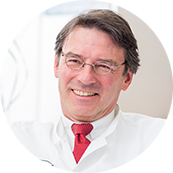The Future of Cardiothoracic Surgery, Too, Lies in Innovation
Some may assume inventive thinking in CV surgery lags behind other areas of cardiovascular care. This is a misconception.

On a bright day in May 1953, American surgeon John Gibbon performed the first ever successful open-heart operation with a heart-lung machine, which he and his wife Mary had developed. This invention—which secured him one of the most prestigious awards in medicine, the Lasker Award, in 1968—revolutionized heart surgery, and inspired a surge of further innovation and disruptive science, which resulted in a brand-new medical specialty: cardiothoracic (CT) surgery.
In the 71 years since Dr. Gibbon’s pioneering operation, we’ve seen very significant innovations, enabling us to adopt new techniques to treat patients with cardiovascular diseases, including patients who were previously considered incurable. As I write this in 2024, there has never been a better time to be a cardiothoracic patient. While many of the headlines of recent years have trumpeted the advances in percutaneous procedures, surgery, too, has continued to innovate. Millions of patients who would have died decades ago can now be saved by expert surgical teams.
But we can’t be complacent. We owe it to our future patients to look ahead and consider how current, unparalleled developments across scientific disciplines can help us keep innovating. The recent advances in robotics and artificial intelligence (AI) would be unimaginable to Dr. Gibbon, but he would understand that the innovations we need won’t only come from within the cardiothoracic community. We can learn from medical colleagues in other disciplines: scientists, engineers, chemists, molecular biologists, AI and robotics specialists, industry leaders, and even policymakers. I believe that only by casting a wide net will we discover and develop the best possible treatments to help our patients in the decades to come.
Some of my counterparts in cardiology may be under the impression that surgical innovation has lagged behind advances in other areas of cardiovascular medicine: this is a misconception. Consider, for example, the integral role surgeons have played in developing minimally invasive approaches to structural heart disease. I have been a member of the European Association for Cardio-Thoracic Surgery (EACTS) Council since 2002, and it has long been my vision that as an organization, EACTS doubles down on our commitment to innovation so that as surgeons we can continue to improve outcomes for heart and lung patients.
That is why, in April, I was proud to co-host the second EACTS Innovation Summit, with Mark Hazekamp, MD, PhD (Leiden University, the Netherlands), in Paris, bringing together experts from across disciplines from Europe, the United States, and Asia to discuss the latest disruptive techniques and innovations that could benefit cardiothoracic patients. During the summit, we heard some of the very latest ideas in cardiothoracic surgery—how AI and immersive technology are changing the entire field of CT surgery, the future of robotic surgery, the engineering and distribution of “super organs” and much more.
But hearing these ideas isn’t enough; we must invest in innovation if we are going to improve care for patients of the future. To help achieve this, we’ve launched the EACTS Innovation Hub where EACTS members will be able to apply for grant funding to stimulate research and advance innovation. The grant application process is set to launch in October 2024. We will be particularly interested to receive applications to research and develop topics that we discussed in Paris: the principles of innovation, how we use ChatGPT-4 in cardiac surgery, the heart valve of the future, extracorporeal circulation, using AI for CT surgery, disruptive improvements for the perioperative period, and lymphatics in CT surgery.
It’s an exciting time to be working within cardiothoracic surgery—particularly for those joining the profession at the beginning of their careers—with many in the field at the forefront of new advancements that are improving patient outcomes. We are looking forward to collaborating with an ever-wider section of the community by supporting more innovation and will continue to be involved in many of the innovations that are disrupting cardiothoracic care.
Just 5 years after Gibbon received his Lasker prize, tragedy struck. He died of a heart attack in 1973, age 69, after a game of tennis: a tragic reminder that even the heroes in our field are susceptible to the very diseases they’ve spent their lives fighting. I cannot imagine how cardiothoracic surgery will look 70 years from now, but I feel confident that with collaboration, investment, and the spirit of innovation, we will save the lives of many more patients.
Off Script is a first-person blog written by leading voices in the field of cardiology. It does not reflect the editorial position of TCTMD.
Friedhelm Beyersdorf, MD, received his medical degree at Johann Wolfgang Goethe University in Frankfurt am Main, Germany, in 1981. His…
Read Full Bio




Comments